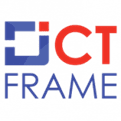Untitled design - 1
7th October 2025, Kathmandu
The analysis of commercial banks’ base rates in Nepal for the month of Ashwin (October 2025) reveals a distinct downward trend in lending costs, primarily driven by the increasing liquidity in the banking sector.
Declining Base Rates
The average base rate across commercial banks has fallen to 5.82% from 5.95% in Bhadra, a welcome sign for potential borrowers.
The bank that currently reports the lowest base rate is Standard Chartered Bank Nepal at 4.60%. This is significantly lower than the highest rate, which is held by NIC Asia Bank at 6.91%. However, borrowers must exercise caution and not solely focus on the base rate, as the ultimate loan interest rate is determined by adding a “premium” to this base rate.
The True Cost of Borrowing: Base Rate Plus Premium
The final loan interest rate is calculated as:
Final Interest Rate=Base Rate+Premium Rate
Banks typically add a premium ranging from 1% to 5% based on factors such as the loan type (e.g., home loan, auto loan, personal loan), the borrower’s credit profile, and the collateral offered. This critical component means a bank with a marginally higher base rate might still offer a cheaper final loan rate if its premium is lower. Conversely, the bank with the lowest base rate, Standard Chartered Bank Nepal (4.60%), could end up having a less competitive final rate if it applies a high premium.
For example, based on available, though slightly older, data for floating rates at certain major banks in Nepal:
Standard Chartered Bank Nepal, despite its very low base rate of 4.60%, may apply a premium. For instance, in the past, their Home Loans, Auto Loans, and Term Loans were often offered at Base Rate + 2.25% to 4.00% premium. This would result in a final loan rate ranging from 6.85% to 8.60% (using the current 4.60% base rate). For a Personal Loan, the premium could be as high as 5.00% to 7.00%, pushing the final rate to 9.60% to 11.60%.
Nepal Bank, with a slightly higher base rate of 5.39%, has offered Home Loans at a premium of Base Rate + 2.42% and Personal Term Loans at a premium of Base Rate + 2.50% to 4.00%. This would put the final Home Loan rate at 7.81% and the Personal Loan rate between 7.89% and 9.39%. This is a competitive final rate, potentially beating Standard Chartered’s higher premium loans.
NIC Asia Bank, with the highest base rate of 6.91%, is known to set its premium based on the product. For a non-collateral-based Personal Loan, the floating interest rate is listed as Base Rate + Risk Premium, and for a fixed-rate option, a rate of 9.50% has been observed. If the premium is kept lower, say 2.59%, the total floating rate would be 9.50%, which is competitive with the high-end personal loan rates of a lower base rate bank like Standard Chartered.
Key Takeaways for Borrowers
- Lowest Base Rate: Standard Chartered Bank Nepal (4.60%) holds the lowest base rate. This is the most attractive starting point for an applicant.
- Cheapest Loan: The cheapest loan is not necessarily from the bank with the lowest base rate. To find the cheapest loan, a borrower must specifically inquire about the final advertised interest rate (Base Rate + Premium) for the specific loan product they require (e.g., Home Loan, Auto Loan) and their specific borrower profile.
- The Lowest Potential Final Rate: Assuming a bank like Standard Chartered Bank Nepal maintains a competitive, low premium on one of its products (e.g., the lowest advertised 1% premium), its final rate would be 4.60%+1.00%=5.60%. This is the theoretical lowest floating interest rate currently available for a commercial bank loan in the market.
- Highest Base Rate: NIC Asia Bank (6.91%) has the highest base rate. Borrowers should expect this bank’s floating rate loans to generally be at the higher end of the market unless they are offered a very low premium or a highly competitive fixed-rate product.
In conclusion, while the overall decline in the average base rate to 5.82% is an excellent indicator of a buyer’s market for loans, the true search for the “cheapest loan” requires a direct comparison of the final, all-inclusive floating interest rates (Base Rate + Premium) or fixed interest rates offered by each bank for a specific type of loan. Borrowers are strongly advised to contact at least the top five banks with the lowest base rates (Standard Chartered, Rastriya Banijya, Everest, Nepal Bank, Global IME) and also the largest players (like Nabil and NIC Asia) to compare the all-in premium rates before making a final decision. This comparison is the only reliable way to pinpoint the actual cheapest loan on the market.
For More: Declining Base Rates
